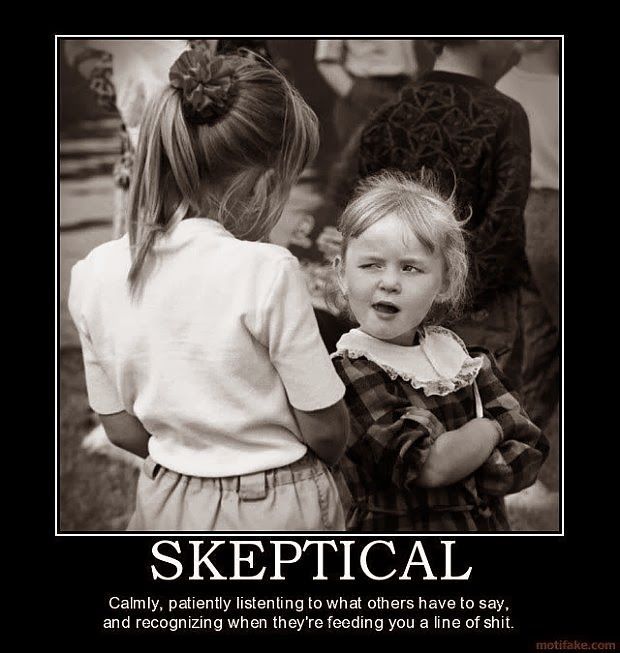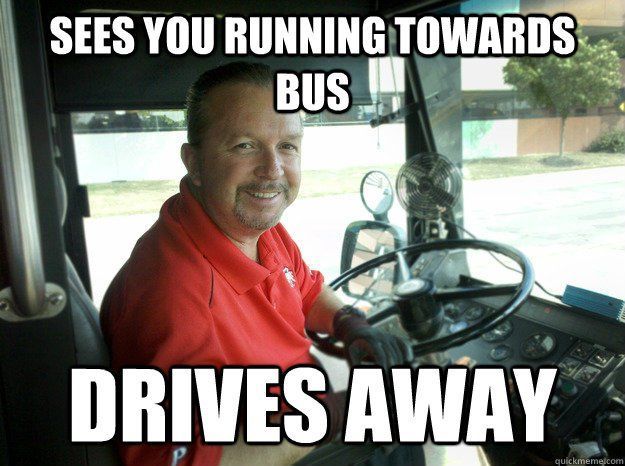Until The Bill Arrives: Why Socialist & Marxist Ideas from AOC, Bernie Sanders, and Zohran Mamdani Deserve the Cold Hard Invoice
The Cost of Utopia: When Socialist Dreams Meet Economic Reality

Introduction
There’s an old rule in finances and life: if someone promises you the moon and gives you a receipt later, check who signed the receipt. When it comes to the recent surge of ideas from self-described “democratic socialists” in the United States — figures like Alexandria Ocasio-Cortez (AOC), Bernie Sanders, and New York City mayoral-hopeful Zohran Mamdani — the moon is being promised with gusto. Free health care. Free college. Free rent. Free transit. Free childcare. And seize the means of production, just for good measure.
If it all sounds too good to be true, it might be precisely because it is. The core claim is that these policies would solve inequality, elevate the working class, and restructure society for fairness. That’s the sales pitch. The logic chain, however, often breaks under scrutiny: Who pays? What happens to incentives? What happens to economic growth when government becomes king? If past examples teach us anything, the bill doesn’t vanish — it lands.
This blog unpacks the ideas behind AOC, Sanders, and Mamdani, exposes the economic math nobody wants to talk about, and asks the most important question of all: when the invoice comes, who writes the check?
1. What They Are Promising
Alexandria Ocasio-Cortez
AOC’s platform reads like a progressive manifesto for structural overhaul. She champions a “Green New Deal,” housing as a human right, jobs guarantees, Medicare-for-All, canceling student debt, and a massive redistribution of wealth. Her rhetoric embraces systemic change: capitalism, as she’s stated, is not working for the many. She invokes inequality, corporate power, and the 1 % as the villains. The answer? A government-driven economy with expansive welfare and regulation.
Bernie Sanders
Sanders has built his career around “democratic socialism,” though his actual proposals are often more correctly described as high-tax social democracy. Nonetheless, his ambitions are bold: Medicare-for-All, free public college, expanded social safety nets, and aggressive taxes on corporations and the wealthy. He casts his battle as “ending capitalism as we know it,” though he often soft-pedals the full implications.
Zohran Mamdani
Mamdani takes the theme into New York City local politics. Running for mayor, he has publicly advocated for the “seizing the means of production,” free bus service, universal childcare, large minimum-wage increases, rent freezes, and significant tax hikes on wealthy individuals and corporations. His approach is explicitly socialist, pointing to redistribution and structural shift in city governance and ownership.
Together, these figures represent more than policy proposals: they are a movement to re-engineer the economic and social structure of America. They claim their vision is not utopian—it’s practical, necessary, and overdue.
2. The Logical & Economic Strain
Incentives Matter
One of the fundamental critiques of socialist policy is this: you cannot ignore incentives and expect a healthy, functioning economy. When taxes, regulation, and government obligations rise sharply, business investment, innovation, risk‐taking—all decline. Jobs don’t necessarily increase; they may shift or vanish. Growth slows and the tax base shrinks, making the promised increases in benefits harder to sustain.
Consider Mamdani’s proposal for free bus service in New York City. On paper: sounds great—zero cost for transit riders. The question no one asks enough: who pays? The city or state must still fund maintenance, operations, upgrades. Fare revenue disappears, so tax revenue must increase or service standards degrade. The promise is free; the cost simply moves behind the curtain. Without sufficient growth and revenue, the quality of service often drops.
Redistribution ≠ Creation
Promoting redistribution means shifting resources from one group to another—not creating new resources. If you move tax burden upward dramatically, you face capital flight, business relocation, job losses, and reduced tax revenue. Over time, the pool you are redistributing shrinks. Some socialists argue this can be offset by bigger government and higher taxes—but history suggests that growth, not redistribution, has consistently produced rising living standards.
The “Seize the Means” Problem
Mamdani’s call for “seizing the means of production” is a clear Marxist refrain. Historically, when states or collectives attempt to control production, the result has been lower productivity, resource misallocation, and economic stagnation. Cuba, Venezuela, the Soviet Union—all teach that central control is costly in lost innovation and opportunity. Mamdani may frame it as “community control” or “worker ownership,” but the practical effect remains: moving decisions from market signals (prices, competition, profit/loss) to political ones (votes, committees, mandates). Once you do that at scale, you risk efficiency and prosperity.
Housing as a Right & Rent Freezes
AOC promotes housing as a human right. It is a compelling moral frame. But when governments cap rents, freeze increases, or heavily regulate landlords, things happen: fewer new units get built, existing units degrade, landlords convert to other uses or leave the market, and one consequence is reduced supply → higher prices elsewhere, or worse quality. If the state promises unlimited housing at controlled cost, and funds maintenance through tax revenue, it still drains the budget if supply falls. And if supply falls, the result isn’t fairness—it’s scarcity.
The Hidden Tax Burden
All of these proposals — free services, bigger welfare, higher minimum wages, universal programs —carry a cost. Someone must pay. Increased taxes on the wealthy may sound logical, but when the wealthy reduce investment, relocate, or shelter assets, the tax take shrinks. The burden often migrates to the middle class or smaller businesses. In turn, this affects job creation, dynamism, and ultimately the same people the policies aim to help.
3. Specific Critiques of Each Idea
AOC: Green New Deal + Jobs Guarantee
The Green New Deal is the crown jewel of AOC’s agenda: aggressive decarbonization, massive government investment in renewable energy, and a jobs guarantee for fossil‐fuel workers. The logic: climate change is real, big investment is needed, government jobs protect the workforce.
But here’s the flip side: guaranteeing jobs means creating positions regardless of whether market demand exists. Government creates or directs jobs, funded by taxpayer revenue. This shifts labor demand from the private sector (where jobs are driven by consumer need and profit signals) to public sector (bureaucratic, politically allocated). That can reduce flexibility, misallocate resources, and reduce innovation. What happens when the jobs promised are not sustainable, or when the government must cut because of budget pressures? The guarantee becomes a broken promise—and the tax bill still has to be paid.
Sanders: Medicare-for-All + Free College
Sanders wants to replace nearly all private health insurance with a single public plan and make college free for everyone. On paper it sounds egalitarian. In practice, health care spending already accounts for ~18% of U.S. GDP. Switching to a public monopoly would require enormous tax increases, cuts in other services, or huge debt. Similarly, making college free removes the pricing signal and choice from students, which could lead to overcrowded schools, dilapidated campuses, or degree inflation. The education system would suddenly be under massive load without the parallel economic growth to sustain it.
Mamdani: Free Transit, Huge Minimum Wage, Rent Freeze
Mamdani’s NYC platform is unabashed. He wants minimum wage to reach $30/hr by 2030, imposes rent freezes thinking it will protect tenants, and offers free bus service. But when minimum wages get too high too quickly, especially in high‐cost cities, businesses can’t absorb the cost: they hire fewer workers, automate, raise prices, or relocate. Free bus service shifts cost entirely onto taxpayers—if not compensated by growth or other revenue, service quality declines. Rent freezes discourage investment in housing; developers pull out, units stop being built, and supply shrinks.
4. Who Really Pays?
Here’s where reality cracks the veneer. When these policies come into practice:
- The middle class pays — through tax increases, fewer job opportunities, slower economic growth.
- Entrepreneurs and small business owners bear the cost — fewer incentives, more burdens, greater risk of exit.
- Future generations pay — deferred infrastructure, higher debt, fewer resources available.
- Society pays — if growth stalls, innovation falls, demographics shift, and the social safety net strains.
For example, if the tax rate on the wealthy rises dramatically, imagine capital relocating from New York to states with lower taxes. The nominal “rich” tax revenue may fall, leaving a bigger hole in the budget. Or imagine new businesses avoiding New York altogether because labor costs are forced high and regulation is thick. Employment growth slows. That means fewer tax dollars, fewer opportunities.
In short: wealth cannot be taxed into oblivion, and growth cannot be ignored. Redistribution without creation is a zero-sum game.
5. Why This Matters
The stakes here are high. When policymakers adopt sweeping socialist or Marxist‐tinged agendas without realistic plans for economic growth, incentive alignment, and burden sharing, the consequences are profound:
- Slower job creation or jobs that disappear
- The rising cost of living despite “free” services
- Deterioration of infrastructure and service quality
- Higher taxes or debt for middle class families
- Reduced dynamism and innovation in the economy
- A shrinking tax base behind larger government obligations
This is not about ideological purity. It’s about outcomes. If the promise is “helping working people,” then you must ask: are these policies helping or hurting over time? Are they sustainable, and are they scalable? If the bill can’t be paid, the consequences hit those who can least afford them.
6. The Big Picture: History Doesn’t Lie
This isn’t just theoretical. Historical examples are plentiful:
- Venezuela under Chavez and Maduro attempted heavy redistribution, nationalization, price controls — result: hyperinflation, scarcity, economic collapse.
- Cuba’s state‐controlled economy produced decades of stagnation, shortages, and migration of talent.
- The Soviet Union’s system achieved industrialization, yes—but at massive human cost, inefficiency and eventual collapse.
Now, to be clear: the U.S. is not Venezuela or Cuba. But the common thread is this: when government becomes the sole driver of economic life, when pricing and production are shifted from market signals to political decisions, inefficiencies mount, and burdens accumulate.
The argument isn’t that every government intervention is bad. It’s that big government interventions with vague promises of “free everything” demand realistic accounting, not just idealistic slogans.
7. Conclusion: Ask Who Writes the Check
When AOC, Sanders, and Mamdani make ambitious promises, they also place large bets on growth, productivity, and compliance of the tax base. Those bets may or may not pay off. When they don’t, someone still pays: often the middle class, sometimes the poor, and occasionally the taxpayer who believed “free” meant no cost.
Be skeptical of bold promises that ignore the math of incentives, the reality of budgets, and the history of socialism. Always ask:
- Who pays?
- What happens if the revenue falls short?
- What happens if growth stalls?
- What happens if the incentives flip negative?
If democratic socialism means a fairer society, then terrific. But if it means slower growth, higher taxes, fewer opportunities for the very people it claims to help, we should call it what it is.
You don’t have to oppose helping people or believe the status quo is perfect. But you should oppose policies built on utopia without accountability. You should demand a plan where free still comes with a budget, where equity is aligned with growth, and where paying the check doesn’t get forgotten.
Because the moment you promise everything and ignore who foots the bill, you don’t change the world—you just shift the cost onto others.
References:
Ocasio-Cortez, A. (2024). Issues. Retrieved from
https://www.ocasiocortez.com/issues
Sanders, B. (2015, April 14).
Defines democratic socialism in Georgetown Speech. Georgetown University News. Retrieved from
https://www.georgetown.edu/news/bernie-sanders-defines-democratic-socialism-in-georgetown-speech/
Mamdani, Z. (2025, June 30). Chilling call for seizing the means of production draws outrage from communist refugees. New York Post. Retrieved from
https://nypost.com/2025/06/30/us-news/zohran-mamdani-seizing-the-means-of-production/
Sagan, C. (1996). The demon-haunted world: Science as a candle in the dark. Random House.
Shermer, M. (2011). The believing brain: How we construct beliefs and reinforce them as truths. Times Books.
Disclaimer:
The views expressed in this post are opinions of the author for educational and commentary purposes only. They are not statements of fact about any individual or organization, and should not be construed as legal, medical, or financial advice. References to public figures and institutions are based on publicly available sources cited in the article. Any resemblance beyond these references is coincidental.











